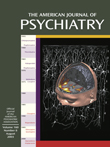Psychopathology and Comorbidity of Psychiatric Disorders in Patients With Kleptomania
Abstract
OBJECTIVE: This study compared patients with kleptomania, patients with alcohol abuse or dependence, and psychiatric patients without impulse-control disorders or substance-related disorders on several key psychopathological dimensions. In addition, the comorbidity of kleptomania with other psychiatric disorders was examined. METHOD: Eleven patients with kleptomania recruited over a cumulative 2-year period and 60 patients with alcohol abuse or dependence and 29 psychiatric comparison patients recruited over a consecutive 6-month period participated in structured clinical interviews to determine the presence of impulse-control and substance-related disorders and of other psychiatric disorders that were comorbid with kleptomania. Psychopathological dimensions were measured with the Barratt Impulsiveness Scale, the Sensation Seeking Scale, the Montgomery-Åsberg Depression Rating Scale, and the anxiety and depression subscales of the Hospital Anxiety and Depression Scale. RESULTS: Significant group effects were found for the Barratt Impulsiveness Scale total and cognitive impulsivity scores, with the patients with kleptomania having higher impulsivity scores than the other groups. Significant group differences were found on the Sensation Seeking Scale total and disinhibition scores. No significant group effects were found for the mood and anxiety measures. Patients with kleptomania had high rates of comorbid psychiatric disorders, particularly mood disorders, other impulse-control disorders, and substance abuse or dependence (mainly nicotine dependence). CONCLUSIONS: Kleptomania presented a specific psychopathological profile that distinguished patients with this disorder from patients with alcohol abuse or dependence and other psychiatric comparison patients. Impulsivity was the major psychopathological feature of kleptomania. A link between kleptomania and affective disorder was supported by the high rate of comorbid affective disorders in patients with kleptomania and a specific pattern of variation in the two conditions over time. Further prospective studies are needed to confirm this pattern. Because kleptomania is characterized by a low rate of comorbid substance-related disorders other than nicotine dependence and by severe psychopathology, it could be an appropriate disorder in which to study the information processes and psychobiology underlying impulsivity.



